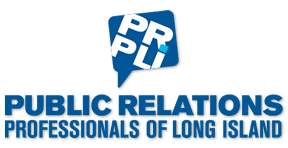Integration and alignment of public relations, advertising, promotion, branding, social media, search engines, mobile, direct marketing and other tactics have become a critical issue for all marketing communication professionals. The Association of National Advertisers (ANA) has, for the second year in a row, named Integrated Marketing Communication as the top challenges facing their members.
Our panel of experts illustrated how they handle integrated marketing at their organization with a brief case study then panel discussion.
 Caitlin Laterza discussed the role that integrated marketing plays in keeping the customer at the center of a marketing strategy. She focused on integrated marketing as a “unified force [of marketing activity] that works together to create a seamless experience for the customer.” Caitlin emphasized how today’s consumer is overwhelmed by marketing messages and in order to break through the noise, it’s important to reach consumers through a variety of touch points ranging from digital to traditional marketing. As Caitlin shared, “The goal isn’t to reach a lot of people. The goal to get the right people to see your message over and over again.”
Caitlin Laterza discussed the role that integrated marketing plays in keeping the customer at the center of a marketing strategy. She focused on integrated marketing as a “unified force [of marketing activity] that works together to create a seamless experience for the customer.” Caitlin emphasized how today’s consumer is overwhelmed by marketing messages and in order to break through the noise, it’s important to reach consumers through a variety of touch points ranging from digital to traditional marketing. As Caitlin shared, “The goal isn’t to reach a lot of people. The goal to get the right people to see your message over and over again.”
 Corin Huff discussed how advances in technology have made it easier and more affordable than ever to implement integrated marketing plans, regardless of the size of your organization or marketing staff. But just because there are many options out there doesn’t mean they are all right for every campaign. Customized and strategic choices should be made to ensure the most effective use of your resources and the greatest impact on your audience.
Corin Huff discussed how advances in technology have made it easier and more affordable than ever to implement integrated marketing plans, regardless of the size of your organization or marketing staff. But just because there are many options out there doesn’t mean they are all right for every campaign. Customized and strategic choices should be made to ensure the most effective use of your resources and the greatest impact on your audience.
 The thrust of Joe’s presentation was focused on implementing a comprehensive Integrated Marketing Strategy to leverage technology, thought leadership and client engagement methodologies to win business. Joe pointed out that B2B professional service firms need to design and implement an internal solution for:
The thrust of Joe’s presentation was focused on implementing a comprehensive Integrated Marketing Strategy to leverage technology, thought leadership and client engagement methodologies to win business. Joe pointed out that B2B professional service firms need to design and implement an internal solution for:
- Developing Original Content
- Creating a Collaborative Culture Across the Enterprise
- Streamlining Processes and Resources
- Targeting Industry Verticals
- Training Teams Internally (How to Use New Marketing Materials)
- Expanding Social Impression and Influence
- Building Thought Leadership in the Marketplace
For Joe’s part he discussed the need to bring “best in breed” talent from across the enterprise into strategic planning meetings; having them help identify other subject matter experts on their teams willing to assist in the content development process and help in recruiting others to participate. In today’s professional services firms, especially in the age of M&A, there’s a real need to smash silos, bring teams from different practice areas (and sometimes multiple offices) together and unify brand messaging to fuel cross-selling. Focus on education and technology (both internally and externally), and create systems to manage expectations and measure the results of the Integrated Marketing campaigns we create.
As for technique in developing Case Studies, here is the four-part formula Joe uses:
- Why: starting with “why” is imperative and the first part of crafting a successful case study. Have a firm understanding “why” your company exists and appeals to the buyer (“why” – you had a seat at the table with the client in the first place).
- How: the case study needs to explain “how” we went about solving the challenge the client was facing — and “how” we communicate our value proposition?
- What: the case study needs to demonstrate to its audience exactly “what” our strategy/approach achieved.
- Who: the case study needs to be written for “who” its target audience is.
Upcoming Events
Sign Up for PRPLI Updates
What’s your story?
We’re accepting blog posts from PRPLI members.
Send your blog to info@prpli.org with subject: “The PRofessional Blog Post.”






